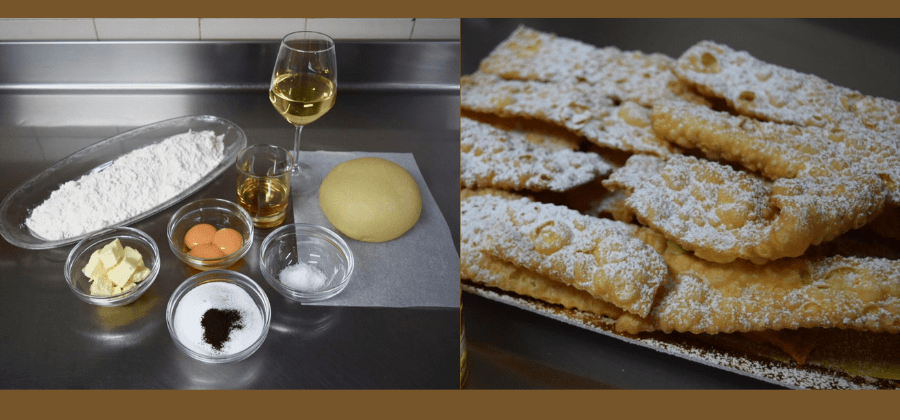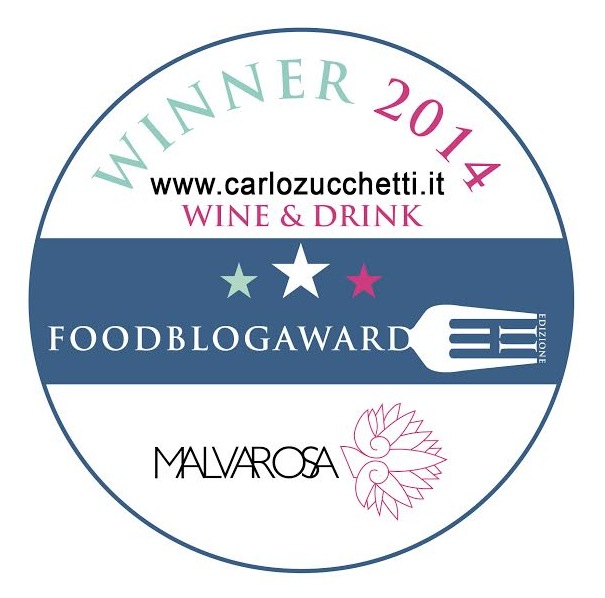

In Italia ogni festività o evento che sia è una buona occasione per mettere a tavola una pietanza, salata e/o dolce. Ed ecco che il Carnevale è arrivato ed è tempo di chiacchiere, nel Nord Italia, frappe al centro o bugie nel Sud, dolce tipico del periodo carnevalesco che mette d’accordo tutto il paese aldilà del nome. Pochi gli ingredienti che danno vita ad un dolce semplice ma gustoso che, fritto o al forno, delizia i palati di tutti, grandi e piccini. La loro tradizione risale a quella delle frictilia, dolci fritti nel grasso animale che venivano preparati nell’Antica Roma per festeggiare i Saturnali. Apicio, gastronomo, cuoco e scrittore romano vissuto fra il I secolo a.C. e il I secolo d.C., ne parla nel suo “De re coquinaria”, la prima raccolta di ricette della storia. Si narra invece che il nome chiacchiere sia stato dato alla corte della Regina Margherita; mentre la sovrana si trovava in compagnia di alcuni ospiti pensò di far allestire un rinfresco. Si recò dal cuoco di corte, Raffaele Esposito (l’inventore della pizza), e gli chiese di preparare un dolce velocemente.  Il cuoco mise a punto un dolce friabile da cucinare in poco tempo. Così nacquero le chiacchiere, chiamate in questo modo proprio perché si gustavano fra una chiacchiera e l’altra. La base è un impasto di farina, burro, uova, zucchero e l’aggiunta di una componente alcolica con la spolverata finale di zucchero a velo, miele o cioccolato. Per meglio descrivervi la ricetta e la realizzazione, mi sono recata dal mio amico pasticcere Gino, detto Bibbao, pasticcere di terza generazione, dopo il papà e ancora prima la nonna, che quest’anno festeggia i suoi 38 anni di attività e i 50 anni dall’apertura del Bar Giusti a Montefiascone in Tuscia. Una mattina, sfacciatamente, lo chiamo chiedendogli di invitarmi presso la sua pasticceria il giorno in cui avesse fatto le frappe e lui, molto gentilente, non se lo fa dire due volte. Mi accoglie sorridente un sabato mattina di Carnevale, in piena produzione di frappe e castagnole, spiegandomi e mostrandomi per filo e per segno come realizzarle.
Il cuoco mise a punto un dolce friabile da cucinare in poco tempo. Così nacquero le chiacchiere, chiamate in questo modo proprio perché si gustavano fra una chiacchiera e l’altra. La base è un impasto di farina, burro, uova, zucchero e l’aggiunta di una componente alcolica con la spolverata finale di zucchero a velo, miele o cioccolato. Per meglio descrivervi la ricetta e la realizzazione, mi sono recata dal mio amico pasticcere Gino, detto Bibbao, pasticcere di terza generazione, dopo il papà e ancora prima la nonna, che quest’anno festeggia i suoi 38 anni di attività e i 50 anni dall’apertura del Bar Giusti a Montefiascone in Tuscia. Una mattina, sfacciatamente, lo chiamo chiedendogli di invitarmi presso la sua pasticceria il giorno in cui avesse fatto le frappe e lui, molto gentilente, non se lo fa dire due volte. Mi accoglie sorridente un sabato mattina di Carnevale, in piena produzione di frappe e castagnole, spiegandomi e mostrandomi per filo e per segno come realizzarle.
La ricetta per l’impasto è la seguente:
1 kg di farina manitoba
100 gr di burro
150 gr di tuorlo
150 gr di zucchero
300 gr di vino Est! Est!! Est!!! di Montefiascone D.O.C.
50 gr di Rum a 70 °
1 bacca di vaniglia del Madagascar
10 gr. di sale
15 gr di aceto di vino bianco
Olio di semi di arachide per friggere
Mettere tutti i solidi assieme, aggiungere il burro a pomata e ultimare co il vino e il Rum ed impastare fino a che l’impasto risulti compatto e omogeneo. Metterlo a riposare in un luogo fresco e asciutto per circa due ore, coperto da pellicola. Successivamente al riposo dividere la pasta ed iniziare a stenderla con una sfogliatrice da cucina fino a renderla quanto più sottile possibile. Posizionarla su un piano e bucherellarla con un rullo o con i lembi di una forchetta, affinché in cottura non si creino bolle troppo grandi che in seguito alla rottura potrebbero riempirsi di olio. Tagliarla con una rotella tagliapasta tutta la sfoglia in pezzi uguali e mettere a friggere in olio caldo di arachidi a 170°. Fare friggere all’incirca 1 minuto per lato, finche diventano dorate e posizionarle su un foglio di carta assorbente e lasciare asciugare. Cospargere con zucchero semolato extrafine e spolverarle con zucchero a velo.
In abbinamento:
Ame I.G.T. Lazio Vendemmia Tardiva Doganieri Miyazaki

In Italy every holiday or event is a good opportunity to put a dish on the table, salty or sweet. And here the Carnival has arrived and it’s time for chiacchiere, in Northern Italy, frappe in the center or bugie in the South, a typical dessert of the carnival period that brings together the whole country beyond its name. Few ingredients give life to a simple but tasty dessert that, fried or baked, delights all palates, young and old. Their tradition dates back to what was called frictilia, sweets fried in animal fat that were prepared in Ancient Rome to celebrate the Saturnalia. Apicius, gastronome, cook and Roman writer who lived between the first century B.C. and the first century of A.C., speaks of it in his “De re coquinaria”, the first collection of recipes in history. It is also said that the name chiacchiere was given by the court of Queen Margherita; while the sovereign was in the company of some guests she thought of setting up a refreshment. He went to the court cook, Raffaele Esposito (the inventor of pizza), and asked him to prepare something sweet. The cook developed a crumbly cake to cook in a short time. Thus were born the chiacchiere, chatter, called in this way precisely because they enjoyed each other between a chatter. The base is a dough of flour, butter, eggs, sugar and the addition of an alcoholic component with the final sprinkling of icing sugar, honey or chocolate. To better describe the recipe and the realization, I went to my pastry chef friend Gino, called Bibbao, a third-generation pastry chef, after his father and even before his grandmother, who this year celebrates his 38 years of activity and 50 years since the opening of Bar Giusti in Montefiascone Tuscia. One morning, very brazenly, I called him asking to invite myself to his pastry shop the day he had made the frappe and he, very kindly, does not let say to him twice. He welcomes me smiling on a Saturday morning of Carnival, in full production of frappe and castagnole, explaining and showing me, backwards and forwards, how to make them.
The recipe for the dough is as follows:
1 kg di Manitoba flour (bread flour)
100 gr of butter
150 gr of yolks
150 gr of sugar
300 gr of white wine Est! Est!! Est!!! di Montefiascone D.O.C.
50 gr of Rhum at 70 °
1 vanilla bean from Madagascar
10 gr. of salt
15 gr of white wine vinegar
Peanut oil for frying
Put all the solids together, add the ointment butter and finish with wine and Rhum and knead until the dough is compact and homogeneous. Put it to rest in a cool and dry place for about 2 hours covered with food film. Once the rest is over, divide the dough and start rolling it out with a kitchen dough sheeter until it is as thin as possible. Place it on a plane and pierce it with a roller or with the flaps of a fork, so that during cooking too large bubbles are not created that after breaking could fill up with oil. Cut it with a dough cutter wheel all the dough into equal pieces and fry in hot peanut oil at 170 °. Fry about 1 minute per side, until they turn golden and place them on a sheet of absorbent paper and let it dry. Sprinkle with extra-fine granulated sugar and icing sugar.
We suggest pairing frappe with the following wine:
Ame I.G.T. Lazio Vendemmia Tardiva Doganieri Miyazaki
Via Donatori di Sangue
Montefiascone
342 375 7453
For any further information please contact me at
stefaniamontalbano@carlozucchetti.it
Ti piace questo articolo?
- Info Autore
Stefania Montalbano
Spazio disponibile
Per la tua pubblicità in questo spazio contatta advertising@carlozucchetti.it
Ultimi articoli
Spazio disponibile
Per la tua pubblicità in questo spazio contatta advertising@carlozucchetti.it














